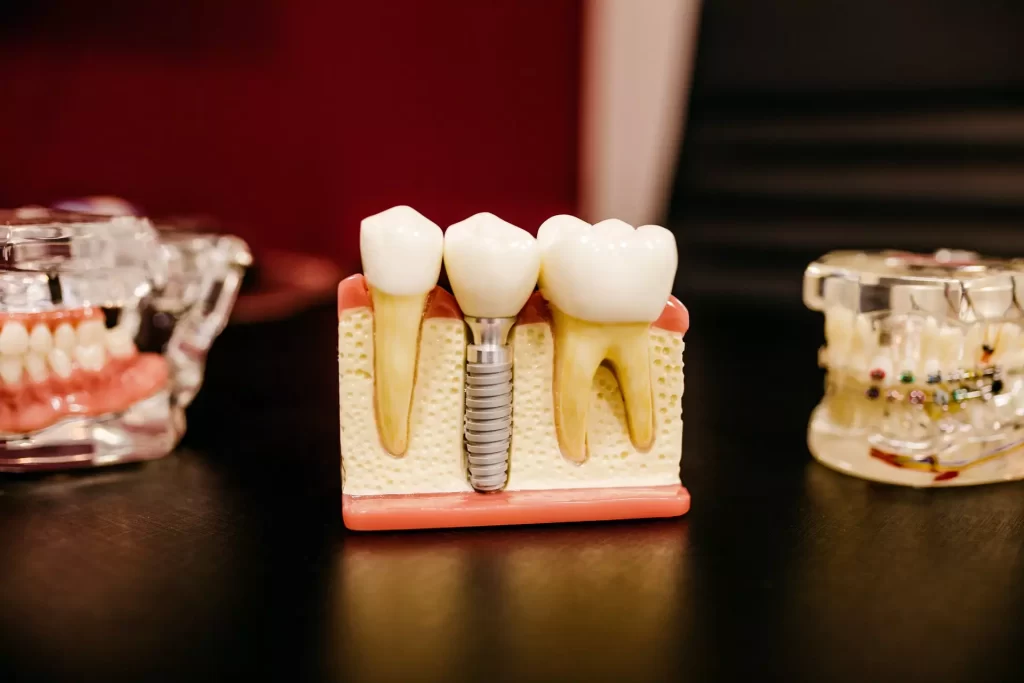Teeth Whitening – The Basic Information
Cosmetic dentistry is that area of dentistry that focuses on improving the aesthetic value of teeth – in short, fixing your smile. And while the main aim is always the look of teeth, many cosmetic treatments also improve structure and function.
Teeth whitening is one of the most popular treatments in the branch. As the name suggests, the procedure entails bleaching or “whitening” one’s teeth. Teeth whitening results in moderate to substantial improvement in the teeth’ brightness or radiance, thereby making the smile more attractive.
Why Is Teeth Whitening Done?
Teeth whitening is usually performed to get rid of stains and visible discoloration from the tooth surface. Two types of stains generally occur on teeth – extrinsic and intrinsic.
Extrinsic Stains
These stains are visible on the surface of teeth and occur due to the consumption of dark-colored foods and beverages, tobacco, and regular wear and tear. Extrinsic stains are superficial and minor – meaning they can be removed with brushing and professional cleaning. Stubborn stains are taken care of via procedures like teeth whitening.
Intrinsic Stains
These stains form inside the tooth surface due to aging, trauma, certain medication (like tetracycline), and excessive fluoride ingestion. Earlier, intrinsic stains were believed to be resistant to bleaching. However, cosmetic dentists today believe that even deep-set intrinsic stains can be removed with the help of take-home whitening kits provided by a professional. The desired amount of whitening takes place over a couple of months or up to a year.
Bleaching Vs. Whitening: What Is The Difference?
The United States Food and Drug Administration states that the term “bleaching” can only be used when the teeth are whitened more than their natural color. This also applies strictly to the use of products that contain a bleaching agent – commonly hydrogen peroxide or carbamide peroxide.
On the other hand, “whitening” is when the tooth’s color is restored only by the removal of accumulated dirt and debris. Technically speaking, any product that cleans the tooth, like toothpaste, is considered a tooth whitener. However, since whitening sounds better than bleaching, it is frequently used to describe treatments containing bleach.
In a dentist’s office, the bleach preference is hydrogen peroxide since it is powerful and acts fast, saving time. For whitening teeth, the concentration of hydrogen peroxide ranges between 9 to 40%.
On the contrary, for at-home whitening kits, the preferred bleaching agent is carbamide peroxide. It is slower-acting and breaks down into hydrogen peroxide. Carbamide peroxide has one-third the strength of hydrogen peroxide, hence, it is much safer to use at home.
What Are The Different Types Of Teeth Whitening Procedures?
Based on your budget, you have two main types of teeth whitening procedures –
- Over-the-counter options: As the name suggests, the whitening treatments included in this are affordable. However, they might not yield desired results quickly. Whitening toothpaste, oral rinses, strips, etc. fall in this category.
- Professional options: While relatively costlier, professional teeth whitening options give guaranteed and desired results. You can either get your teeth whitened by a dentist or opt for take-home kits provided by one.
Whitening Toothpaste
All toothpaste contains mild abrasives – meaning they remove surface stains. Some whitening toothpaste might contain gentle chemical or polishing agents that offer more stain removal effectiveness.
You can spend anywhere from $1 to $20 on whitening toothpaste.
Whitening Gels and Strips
Whitening gels contain peroxide and have a small brush that applies the product directly to the tooth surface. You will notice results in a few days and it lasts about 4 months. Follow the instructions of the product box carefully. Whitening gels cost between $10 to $50.
Whitening strips are coated with a peroxide-based whitening gel. When applied according to the box’s instructions, you will see results in a couple of days.
Whitening Rinses
Whitening oral rinses, like most mouthwashes, freshen breath and take care of dental plaque, thereby preventing gum disease. In addition to this, they contain ingredients like hydrogen peroxide that whiten teeth.
It takes around 12 weeks to notice results with whitening oral rinses. However, dental experts suggest that these might not be as effective as their other whitening counterparts. This is due to rinses coming in contact with teeth for a very short time.
Whitening oral rinses might cost around $5 a bottle.
Professional Teeth Whitening – In-office
In-office, or professional bleaching, is the best way to whiten teeth. In this treatment, the whitening agent is applied directly to the patient’s teeth. These are used in combination with a special light, laser, or heat. You will experience fantastic results within 30 to 60 minutes.
However, to obtain dramatic results, you might require several appointments. That being said, you will notice sure-shot changes right after the first appointment.
Professional teeth whitening is the most expensive of all the whitening options, costing about $650 per appointment on average.
Take-Home Kits
Professionally dispensed kits are ones that you can take home and use to whiten your teeth over a period. Most dentists agree that take-home kits give the best results over time. These incorporate custom trays and a peroxide gel with a lower concentration.
All you have to do is apply the gel on the trays and place them in your mouth for as long as the dentist recommends. Take-home kits cost between $100 to $400.
What Are The Risks Associated With Teeth Whitening?
There are a couple of risks associated with teeth whitening. These are –
Sensitivity
Bleaching or teeth whitening may cause a temporary increase in sensitivity to extreme temperatures, pressure, and touch. This is more likely to occur after in-office whitening due to the use of highly concentrated bleaching agents. However, this might last only up to a day or two.
Irritation To The Gums
Peroxide tends to irritate gums – this is why the procedure is performed safest in a dentist’s office. The dentist will protect the gums with a protective layer before applying the bleaching agent.
Technicolor Teeth
Technicolor teeth occur when natural teeth are whitened with restorations like bonding, crowns, and veneers in the mouth. The restorations maintain their default color while the natural teeth get whitened.
For more information on teeth whitening and how much it costs in our office, get in touch with MPLS Dental today. Schedule an appointment by calling (612) 332-1255.






















